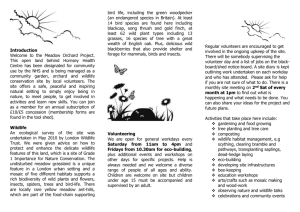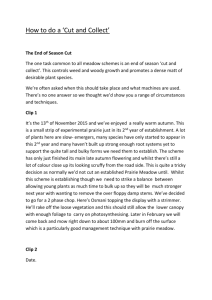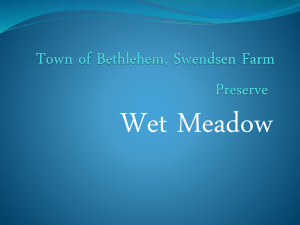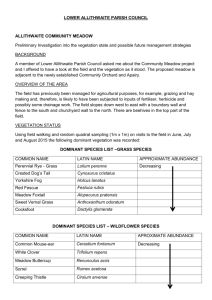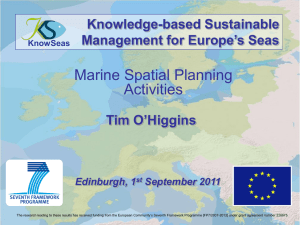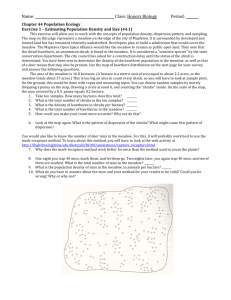Interview with Bill Logan
advertisement
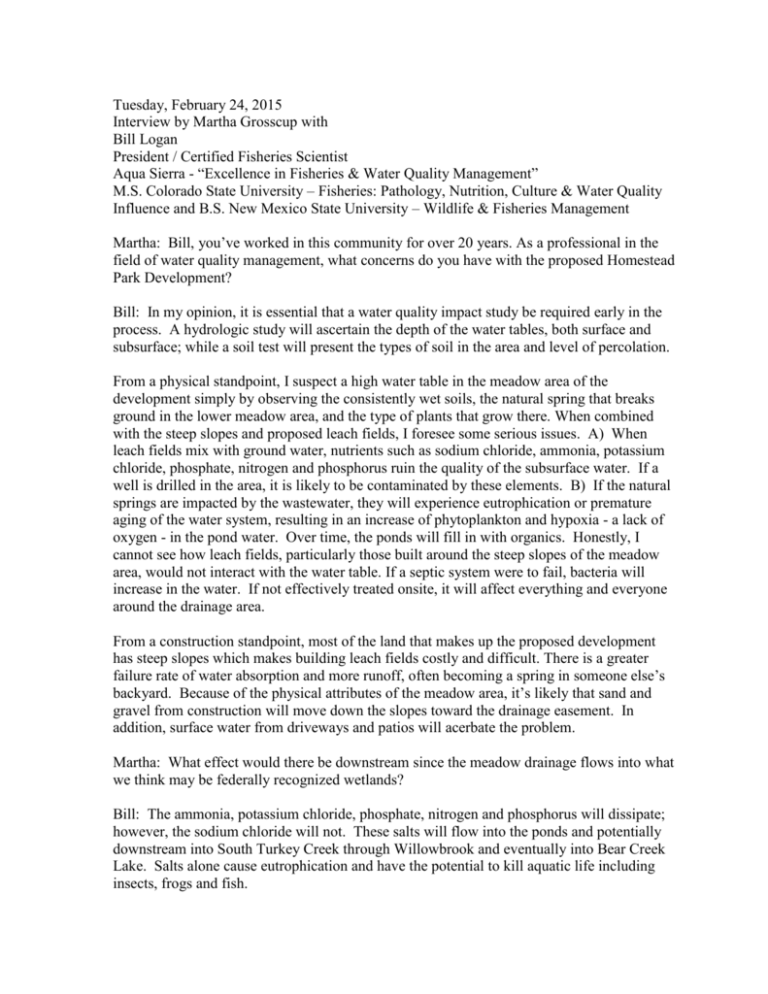
Tuesday, February 24, 2015 Interview by Martha Grosscup with Bill Logan President / Certified Fisheries Scientist Aqua Sierra - “Excellence in Fisheries & Water Quality Management” M.S. Colorado State University – Fisheries: Pathology, Nutrition, Culture & Water Quality Influence and B.S. New Mexico State University – Wildlife & Fisheries Management Martha: Bill, you’ve worked in this community for over 20 years. As a professional in the field of water quality management, what concerns do you have with the proposed Homestead Park Development? Bill: In my opinion, it is essential that a water quality impact study be required early in the process. A hydrologic study will ascertain the depth of the water tables, both surface and subsurface; while a soil test will present the types of soil in the area and level of percolation. From a physical standpoint, I suspect a high water table in the meadow area of the development simply by observing the consistently wet soils, the natural spring that breaks ground in the lower meadow area, and the type of plants that grow there. When combined with the steep slopes and proposed leach fields, I foresee some serious issues. A) When leach fields mix with ground water, nutrients such as sodium chloride, ammonia, potassium chloride, phosphate, nitrogen and phosphorus ruin the quality of the subsurface water. If a well is drilled in the area, it is likely to be contaminated by these elements. B) If the natural springs are impacted by the wastewater, they will experience eutrophication or premature aging of the water system, resulting in an increase of phytoplankton and hypoxia - a lack of oxygen - in the pond water. Over time, the ponds will fill in with organics. Honestly, I cannot see how leach fields, particularly those built around the steep slopes of the meadow area, would not interact with the water table. If a septic system were to fail, bacteria will increase in the water. If not effectively treated onsite, it will affect everything and everyone around the drainage area. From a construction standpoint, most of the land that makes up the proposed development has steep slopes which makes building leach fields costly and difficult. There is a greater failure rate of water absorption and more runoff, often becoming a spring in someone else’s backyard. Because of the physical attributes of the meadow area, it’s likely that sand and gravel from construction will move down the slopes toward the drainage easement. In addition, surface water from driveways and patios will acerbate the problem. Martha: What effect would there be downstream since the meadow drainage flows into what we think may be federally recognized wetlands? Bill: The ammonia, potassium chloride, phosphate, nitrogen and phosphorus will dissipate; however, the sodium chloride will not. These salts will flow into the ponds and potentially downstream into South Turkey Creek through Willowbrook and eventually into Bear Creek Lake. Salts alone cause eutrophication and have the potential to kill aquatic life including insects, frogs and fish. Martha: What about the effect on wildlife habitat? Bill: From a biological standpoint, all of these issues will contribute to the destruction of the existing wildlife habitat. This is something that cannot be mitigated effectively. In most cases, species become endangered or threatened due to loss of habitat. I see the proposed development as creating a huge loss of habitat. The elk migrate across 285 to this meadow. It’s easy for them to survive there with the plants and water that exist in the meadow. If you take the grading, construction, tree removal, runoff and add to it potential pollution of the water, you have enormous impact on the wildlife. There’s absolutely no question in my mind that not only a water quality impact study is needed but a more comprehensive Environmental Impact Study.

